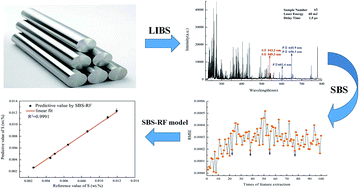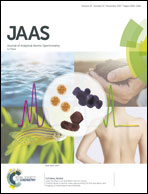Quantitative detection of harmful elements in alloy steel by LIBS technique and sequential backward selection-random forest (SBS-RF)
Abstract
In recent years, LIBS quantitative analysis based on multivariate regression has received considerable attention, and variable selection is critical for improving accuracy of multivariate regression analysis of LIBS. In the present study, sequential backward selection combined with random forest was proposed to improve detection accuracy of sulfur and phosphorus in steel. First, LIBS spectrum line of S and P was identified by the NIST database. Second, input variables for RF calibration model were selected and optimized by SBS, and RF model parameters (ntree and mtry) were optimized by out-of-bag (OOB) estimation. Finally, optimized input variables and model parameters were employed to build an SBS-RF calibration model for quantitative analysis of P and S in steel. Results showed that the SBS-RF model provided good predictions for S (R2 = 0.9991) and P (R2 = 0.9994) compared with those provided by the univariate method, PLS model and traditional RF model. Thus, LIBS coupled with SBS-RF is an effective method for quality supervision and control of steel products.



 Please wait while we load your content...
Please wait while we load your content...